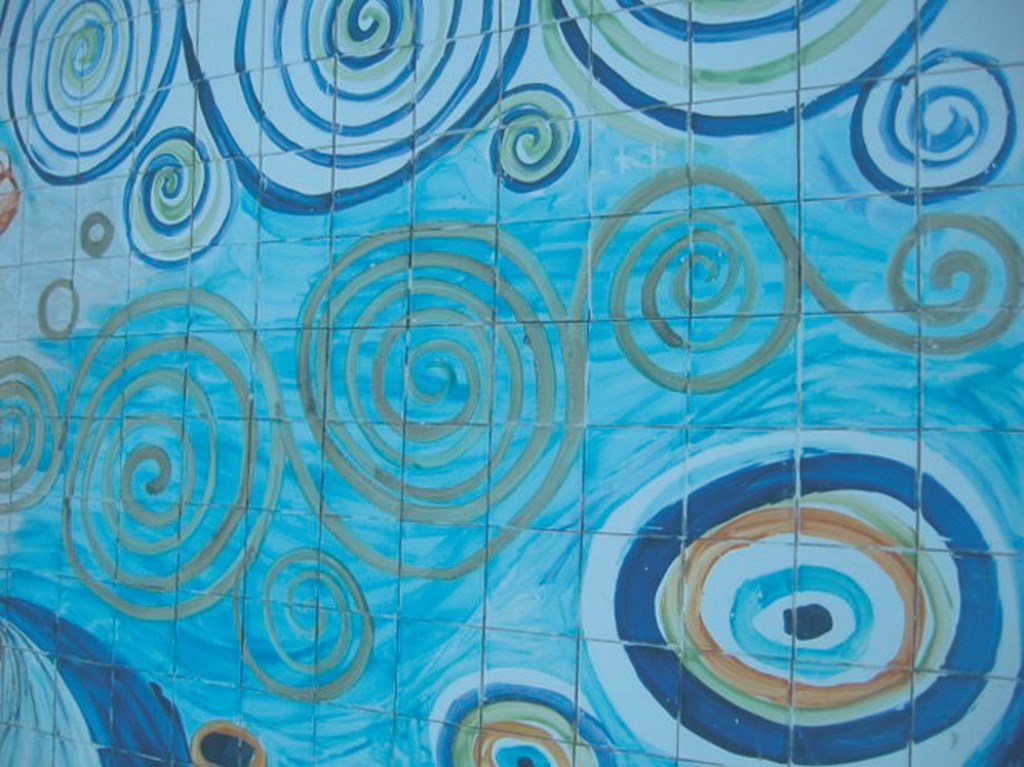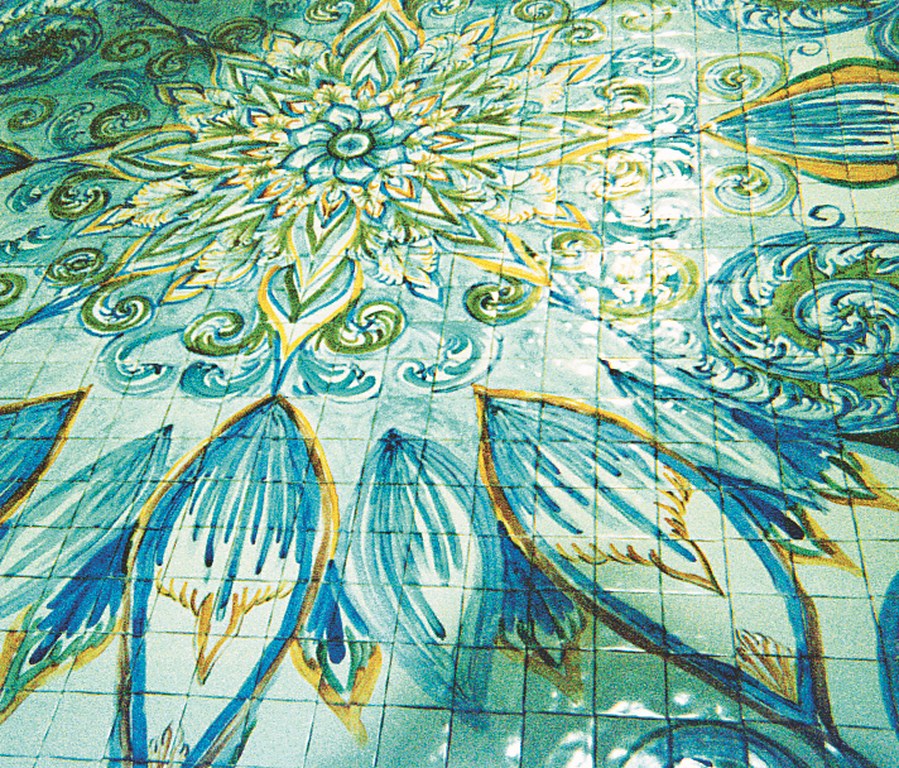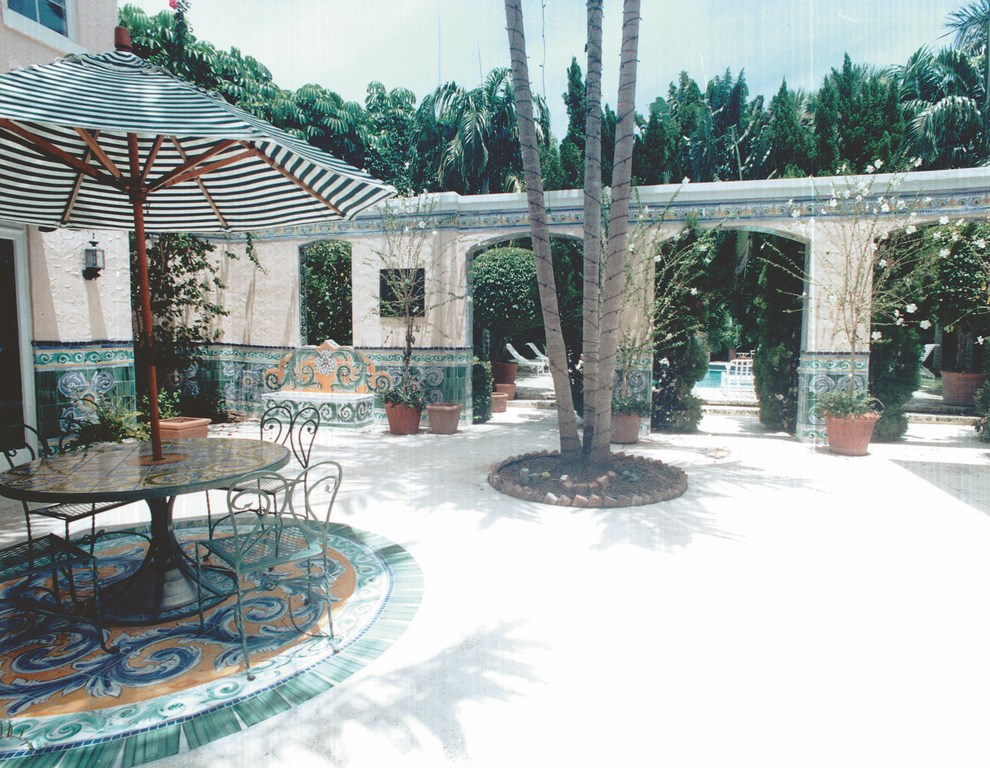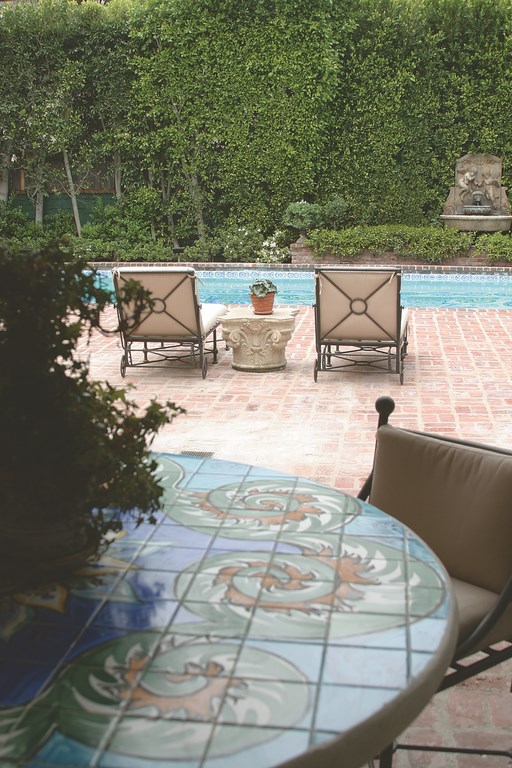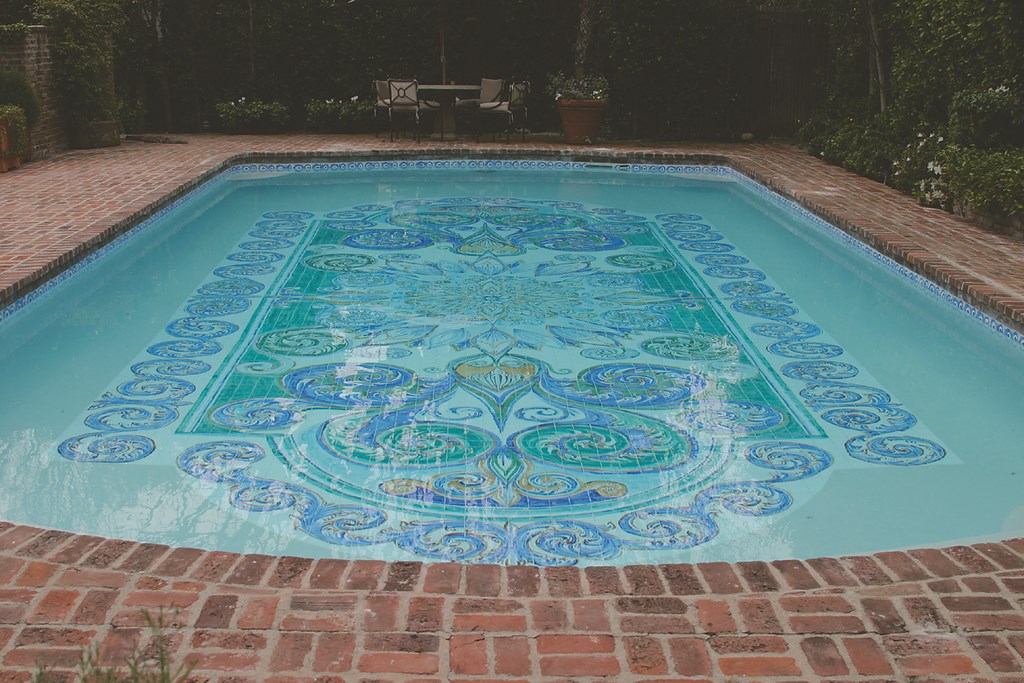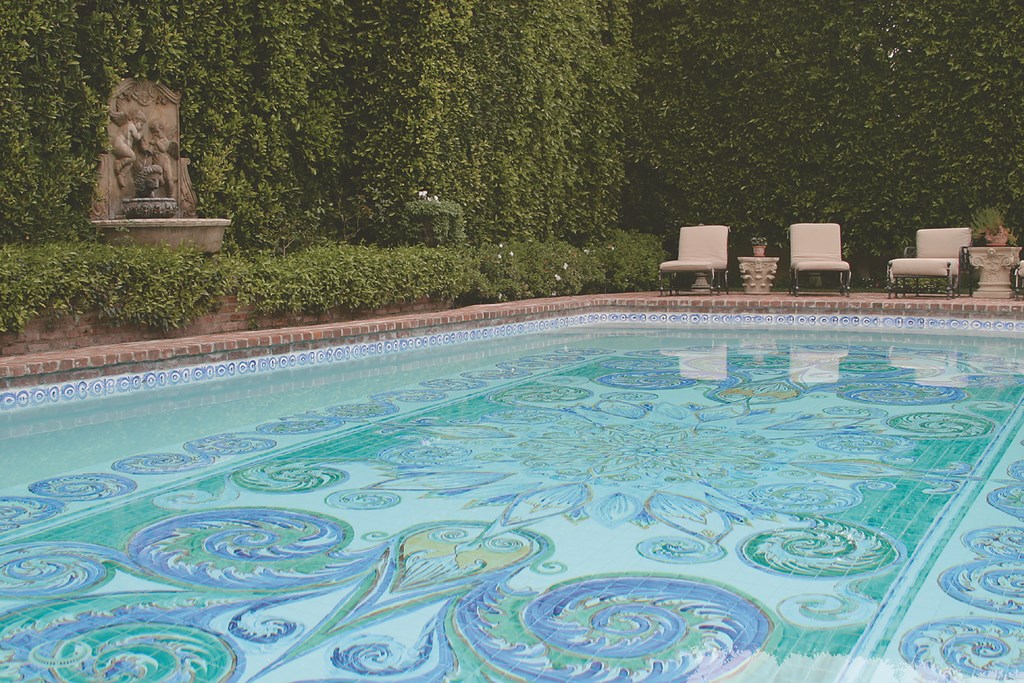Passion’s Furnace
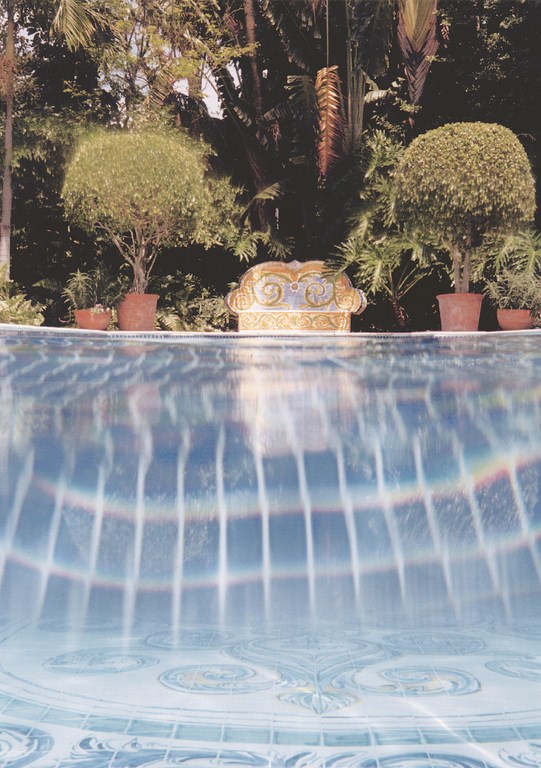
When I was a kid in Caltagirone, Sicily, everybody worked hard all the time – grueling manual labor in the fields and factories.
By the time I was eight years old, I was already working with my father in a ceramic-sculpture foundry. I didn’t do much more than sweep the floors, but I was around all sorts of craftspeople and began to see that there were some forms of hard work that were more fulfilling than others. So I began to think about becoming a painter.
I took my first steps in that direction at 13. By the time I was 18, I’d opened a studio and was painting and sculpting on my own. In those days, the arts community was an exciting place where we shared ideas, fed on each others’ energy and competed with each other for good commissions. I’m not ashamed to admit that I thought the established artists I hung out with were cool and powerful in their own ways – and that I wanted to be just like them.
Given the specific nature of my art, it’s not surprising that the great Italian masters heavily influenced my work right from the start, including Michelangelo, Raphael and especially Leonardo Da Vinci. They are my heroes, and I see the work I do as a modest continuation of the traditions they established.
These artists taught me that great art is about passion and the desire to create something unique and beautiful. They teach us that we can use our hands, minds and hearts to evoke emotions and touch the spirit. And in trying to follow the artist’s path in my own life, I’ve also found that making art is a pretty good living.
ETERNAL FORMS
As is the case for just about everyone, I was overwhelmed when I first visited Rome and saw the ceiling of the Sistine Chapel. The figures are so powerful and have been rendered with such shameless passion and skill – and the work is so vast that you can look at it for hours and not take in the whole thing. Not only was I impressed with the work itself, I was inspired by Michelangelo’s obvious attitude that, in art, nothing is impossible.
By the time I was 20, I had started traveling and eventually came to New York. I fell in love with the city, with its people and especially with all of the creativity and energy to be found here. I decided to hang around for a while – and have been here basically ever since.
To that point in my career, my work as a painter had been somewhat overshadowed by my early success with sculptures in bronze. I like the dimensionality of sculpture and how it exists in the midst of an environment, but my first passion was painting. It took a while, but I ultimately found my true path by combining my love of painting with ceramics and water. Here I had the perfect amalgamation of elements that could satisfy my desire to create art that is a vital part of peoples’ lives.
| I start my work by numbering the backs of tiles in sequence and laying them out in order on the floor of my studio before painting and glazing them. The patterns I paint are filled with sweeping, organic contours and shapes in a style that is my own interpretation of classic decorative motifs I saw all around me while growing up and learning my craft in Italy. |
In a way, it’s fitting that tile is my medium. My last name, Furnari, means “those who attend the furnace.” I’d studied the ceramic arts in Florence, and all the time that I was working with oil on canvas or with bronze or iron sculpture, I always knew in my heart of hearts that I’d end up working mainly in ceramics.
In my hometown in Italy, there’s a famous Roman bath. Made out of the same materials I use today, it still looks beautiful. I see today’s swimming pools as a modern extension of a great tradition and the perfect setting for the romanticism of classically inspired artwork.
I say perfect for two reasons. First, it’s a fact that water is mesmerizing and draws our eyes and attention as a matter of instinct. Second, because of the way it is produced, tile offers a wonderful integration of fire and water. The tiles I paint are fired at a temperature of more than 2,000 degrees: By placing these tiles in water, I draw metaphorically and suggestively on the power and energy of both fire and water, ephemera and permanence, even solid and liquid.
Yes, I romanticize the materials and processes of my art, but I’m not alone: These materials have been seen together this way for thousands of years in some of the most dramatic and dynamic compositions to be found anywhere.
BATHING BEAUTY
As is the case with any serious artist, my career is constantly unfolding. To date, working in hand-painted mosaics in swimming pools has fueled all of my artistic dreams and ambitions and has given me a measure of success, but I am still striving and am convinced that one day I will create one of the most beautiful pools ever to be built.
Sure, it’s a matter of taste: Some people love naturalistic pools with rocks and cascades; others are inspired by modern artistic sensibilities and may lean toward minimalist or industrial designs. For the clients who commission my works and for me, however, the classic look will always be the most beautiful.
Why swimming pools? Well, for one thing they’re generally pretty big and provide a broad canvas upon which the artwork unfolds. I’ve also worked walls and arcades and benches, and while those projects are exciting in their own way, they don’t come close to the drama that happens when you view tile beneath the water in a beautiful swimming pool.
The interactive quality of water environments is also very important to me. How can you not feel good about a medium in which, when you’re done, children will play and parents will exercise or spend time relaxing with friends and great glasses of wine?
| While I completely enjoy working on big canvasses in the bottoms of pools, whenever possible I will also tackle elements of the surrounding environment and will, as requested, decorate decks with tile ‘carpets,’ for example, or add ornamentation to walls and arches and tile the tops of tables. I also will complement my work in the bottoms of pools with vividly patterned waterline and step tiles. |
I also work on smaller scales, designing classically styled bathtubs that I shape by hand. With both baths and pools – and being, after all, a man – I visualize beautiful women lowering their bodies and souls into the water. The human form, especially the female form, becomes part of the art. In a sense, this human participation will finish the work I begin in my studio.
I am fully aware as I work that the contours of the female form influence every stroke of my paint brushes. The spirals, the curves, the sensuous compositions are all a direct result of the study of and appreciation for the female form. I am not alone in this: It’s a theme we see explored in works of artists from ancient Greece and Rome through the Renaissance and up to the art of Picasso and others.
Like these masters, I also find great inspiration in the forms, colors and textures of nature and plant materials and see the forms of the human body and flowers in particular as being so intertwined that they make powerful statements about how inseparable we are from nature all around us.
When I work with clients, I know they’ve come to me because they want me to draw on the fullness of these artistic traditions. It’s a very personal process, and for me, it’s important that they appreciate my approach and fall in love with my work. I do sketches and listen to what they say. We get to know each other and eventually we all come to understand how my work will fit within their homes.
THE ARTIST’S LIFE
The mosaics I create are all painted by hand, by me alone, and are creative expressions of the purest form. If my prospective clients say they want something that reproduces or approximates something they’ve seen, I will tell them that they need to contact the factory that generated the look they want. But this is not usually an issue: Patrons astute enough to commission original artwork understand that the process of creation must come from the artist’s mind and heart, not from a pattern book.
The method I use is exhausting but quite straightforward: I take the ceramic tiles I need for a project, cover them with a clear coat, then lay them all out in my studio before I start painting with special glazes that I formulate myself.
Once I get going, my discussions with the client and the work we’ve done in planning the piece is all filtered through my creative intuition as I paint. I feel the inspiration and influence of my life’s experience and my absorption of the classics coming out in the brushstrokes. Sometimes, I feel like a higher power is guiding my hand. I know that sounds about as pretentious as can be, but to me it’s very real.
| My clients tend to have an appreciation for the roots of my decorative art and often add to the mood by ‘accessorizing’ in ways that extend and emphasize the classic look. Stone fountains, planters and substantial furnishings work in conjunction with the tile to create an overall atmosphere of elegance, serenity, worldliness and a tasteful indulgence in the good life. |
When I get in a groove, I can really work up a sweat. Indeed, it’s not unusual for me to work for 12 hours or more almost without stopping. It’s not quick work by any means, but it’s steady and methodical and I’m constantly thinking about how it will look when installed. When I’m finished with the painting, I load the tiles into the kiln for firing. I then inspect all finished pieces individually before they are packed and shipped to the job site.
For a time, I allowed other installers to lay the tiles for me. Too often, however, I’d find a piece or two had been rotated 90 or 180 degrees and, occasionally, a piece that had been put in the wrong place. The simple fact is that when the work features such broad and expressive contours and forms, one misplaced or improperly oriented piece can make the whole composition fall apart.
So now I install every single tile myself. As any tile setter knows, this is hard work, but for me it’s preferable to having to go back and fix problems – and run the risk of damaging virtually irreplaceable tiles in trying to remove and reposition them.
ENJOYABLE ART
With tile art in swimming pools, there is always the near-magical moment when the water comes into play and works its magic.
The refraction of light, the movement of ripples across and within the water, the reflections of the sky mingling with the vivid colors of the tile – all of this lends a complexity and sense of depth and dimension to the composition that simply cannot be achieved in a dry environment. It’s also exciting to observe these pools over time: Given the way the light and setting changes with the seasons and the hours of each day, the artwork always has a subtly shifting character and appearance.
Of course, my greatest joy comes from seeing the reactions of my clients as they begin to appreciate the completed work as it comes to life. There’s also a certain bittersweetness to the process: If there’s one fact that saddens me about working on residential pools, it’s knowing that only a few people will ever experience the thoughts and emotions that went into the piece.
Of course, I like making these clients as happy as can be, but I am aware in the back of my mind that I someday want to work in more public settings where, through the years, tens of thousands of people will themselves become a part of the artistic process by looking at my work or swimming in the water.
The artist’s life is tough in that way, and in others. Living in New York is great for an artist, for example, but you always have to work at a high level just to survive, and here it seems that you even have to pay for the air you breathe. This puts a lot of pressure on being unique and inspiring, and that tends to make it a constant struggle to grow and avoid conflicts between being an artist and being in business.
Despite everything that comes as part of the process, however, when I look at the finished work or in my clients’ eyes or think back to the furnaces of creativity that inspired me as a child, I know that putting art in swimming pools is exactly what I want to do. For that, I’ll always be humbly thankful.
Sergio Furnari is a New York-based painter and sculptor who focuses much of his energy on hand-painted tile mosaics. Born in Caltagirone, Sicily, his talent was evident early on. He began drawing and sculpting at the age of five; at six, he took his first job, sweeping floors at a sculpture foundry. He spent the next six years working, learning and developing his artistic skills, then moved to New York in 1992, where he began creating metal sculptures and paintings. In 2002, he gained notice for his life-size replica of the famous 1932 photograph, “Workers on a Lunch Break,” taken by an unknown photographer of laborers eating lunch on an I-beam during the construction of the Rockefeller Center. His work can be seen at the National Museum of Industrial History, an affiliate of the Smithsonian Institution in Bethlehem, Pa., and is available in galleries around the country and in Europe.












